How to Determine if it’s Safe to Drill into a Wall

Drilling into a wall can be a daunting task, especially if you’re unsure about what’s behind it. Before you start drilling, it’s important to take the necessary precautions to ensure your safety and avoid damaging the wall or any hidden wires or pipes. Here are some steps to determine if it’s safe to drill into a wall:
Step 1: Use a Stud Finder
One of the easiest ways to detect what’s behind a wall is by using a stud finder. A stud finder is a handheld device that helps locate the vertical wooden studs within a wall. By sliding the stud finder slowly across the surface of the wall, it will emit a sound or light indicator when it detects a stud. This will help you identify safe areas where you can drill without hitting any electrical wires or plumbing pipes.
Step 2: Check for Electrical Outlets and Switches
Before drilling, it’s important to be aware of any nearby electrical outlets or switches. These fixtures are often mounted on the studs within the wall, so drilling near them can pose a risk. To determine the location of electrical fixtures, use a voltage tester, which can detect live electrical currents. Make sure to turn off the power to the area where you plan to drill, and double-check that no electrical wires are present before proceeding.
Step 3: Look for Plumbing Fixtures
If you’re drilling into a wall in a bathroom or kitchen, it’s essential to check for plumbing fixtures. These can include water pipes, drain pipes, or supply lines, and drilling into them can cause leaks or other costly damages. To identify plumbing fixtures, examine the area for visible pipes or look for signs of moisture or water damage. If you’re unsure, it’s always best to consult a professional plumber who can provide expert advice.
Step 4: Measure the Wall Thickness
Knowing the thickness of the wall can also help you determine if it’s safe to drill. Most interior walls in residential buildings are typically 4.5 inches thick, while exterior walls can be thicker. By measuring the wall’s thickness, either with a measuring tape or by inspecting an outlet box, you can ensure that your drill bit is long enough to penetrate the wall without causing any damage.
By following these steps and taking the necessary precautions, you can safely drill into a wall without any surprises or accidents. Remember to always prioritize safety and consult professionals if you have any doubts or concerns.
Why Safety is Important
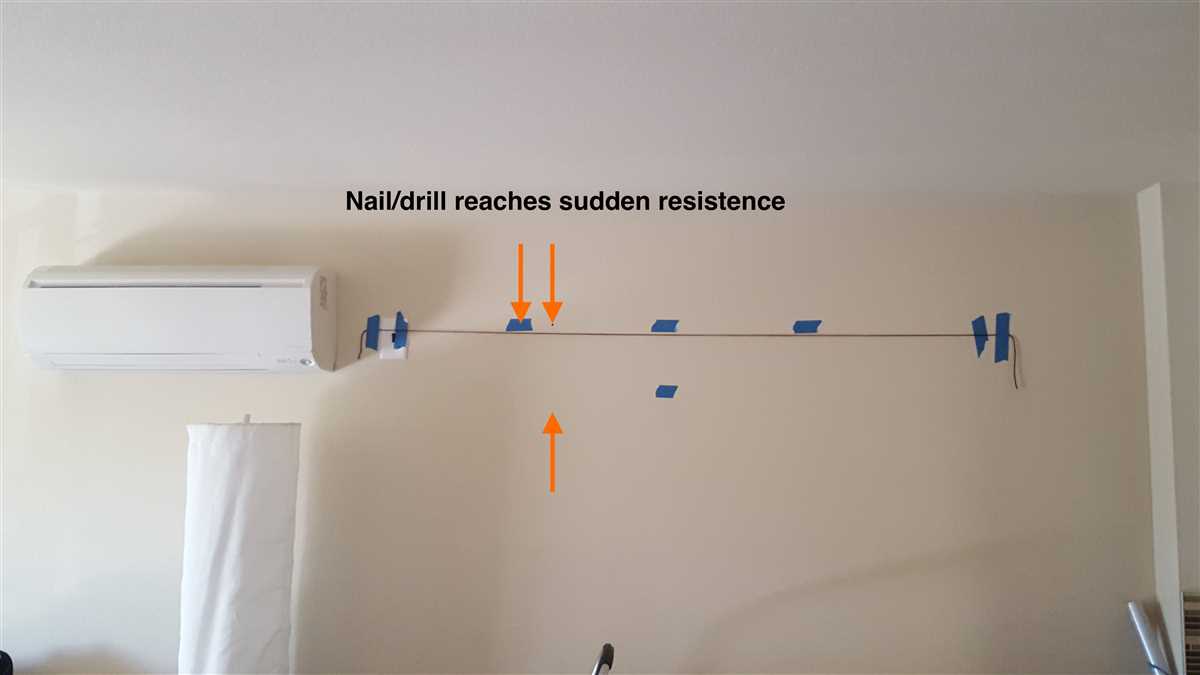
Protect Yourself and Others
Safety should always be a top priority when drilling into a wall. By taking the necessary precautions, you can protect yourself and others from potential harm or accidents. With the right safety measures in place, you can minimize the risks and ensure a safe working environment.
Avoid Property Damage
When drilling into a wall without considering safety precautions, you run the risk of causing damage to the property. This could include damaged wires, pipes, or structural issues. By following safety guidelines, you can minimize the chances of causing costly damage that may require expensive repairs.
Prevent Personal Injuries
Improper drilling techniques or failing to use safety equipment can result in personal injuries. Accidents such as slips, falls, electrical shocks, or cuts can occur if you are not careful. Utilizing safety equipment like goggles, gloves, and protective clothing can greatly reduce the chances of these injuries.
Maintain Structural Integrity
A well-drilled hole is one that is made without compromising the structural integrity of the wall. Without taking proper safety measures, you risk weakening the wall, which can lead to stability issues over time. By using the correct tools and techniques, you can ensure that the wall remains strong and stable after drilling.
Follow Legal and Professional Guidelines
Following safety protocols is not only important for your own well-being but also to comply with legal and professional guidelines. Construction and renovation projects often have strict regulations in place to ensure safety. By adhering to these guidelines, you demonstrate professionalism and protect yourself from potential legal consequences.
Promote a Culture of Safety
Emphasizing safety creates a culture that encourages others to prioritize safety as well. By practicing safe drilling habits and educating others on the importance of safety, you can help create an environment where everyone understands and respects the significance of taking the necessary precautions.
| Avoidance Techniques | Impact |
|---|---|
| Inspect the wall before drilling | Prevents damage to hidden wires or pipes |
| Use a stud finder | Ensures drilling into a more stable part of the wall |
| Wear protective gear | Reduces the risk of personal injury |
| Use anchors for additional support | Maintains the integrity of the drilled hole |
By considering safety as a top priority when drilling into a wall, you can protect yourself, others, and the property from potential harm or damage. By following safety guidelines and using the appropriate tools and techniques, you can create a safe working environment and ensure a successful drilling experience.
Tools You Will Need
Before drilling into a wall, it is important to gather the necessary tools to ensure a safe and successful drilling process. Here are the tools you will need:
- Measuring Tape: A measuring tape is essential for measuring the space where you plan to drill. It will help you determine the exact location and ensure accuracy.
- Pencil: A pencil is needed to mark the spot where you will be drilling. Make sure to use a pencil instead of a pen as pencil marks can easily be erased.
- Level: A level is used to ensure that your drilling will be straight and aligned. It will help prevent any uneven drilling or crooked holes.
- Drill: A drill is the main tool used for drilling into walls. Depending on the type of wall and the size of the hole you need, you will need to choose the appropriate drill and drill bit.
- Drill Bits: Drill bits come in different sizes and types. Make sure to choose the right drill bit for the material of your wall and the size of the hole you need.
- Protective Gear: Safety goggles and gloves are important for protecting your eyes and hands from any debris or accidents that may occur during the drilling process.
- Stud Finder: If you are drilling into a wall with studs, a stud finder will help you locate the studs and avoid drilling into them. This is especially important for heavier items that need to be securely hung on the wall.
- Masking Tape: Masking tape can be used to help prevent the wall from cracking or chipping while drilling. It can also help keep the area clean and tidy.
- Vacuum Cleaner or Dustpan: A vacuum cleaner or dustpan will come in handy for cleaning up any dust or debris that is created during the drilling process.
- Anchors and Screws: Depending on what you are hanging on the wall, you may need anchors and screws to secure the item in place. These are especially important for heavier objects.
Step-by-Step Guide to Determine if it’s Safe to Drill into a Wall
1. Check for Electrical Wiring
Before drilling into a wall, it’s essential to ensure that there are no hidden electrical wires behind the area you want to drill. To do this:
- Turn off the power to that specific wall or the entire house if necessary.
- Use a stud finder or a non-contact voltage tester to detect any live electrical wires in the vicinity of the drilling site.
- If the stud finder or voltage tester indicates the presence of wiring, it’s important to consult a professional electrician to safely relocate or work around the wires.
2. Locate Wall Studs
Drilling into a wall stud provides a strong anchor for your screws or nails. Follow these steps to locate the studs:
- Use a stud finder to scan the wall and detect the presence of studs. Move the stud finder horizontally until it indicates the edges of the stud.
- Alternatively, you can gently tap the wall with your knuckles. A solid thump indicates the presence of a stud.
- Once you locate one stud, measure the standard 16-inch or 24-inch intervals to identify the position of other studs.
3. Determine Wall Material
Knowing the type of wall material can help you choose the appropriate drilling technique and tools. Common wall materials include:
- Drywall: This is the most common wall material. It’s easy to drill into, but you should be mindful of the location of studs.
- Plaster: Plaster walls are more challenging to drill into due to their hardness. It’s recommended to use a hammer drill or a masonry bit when drilling into plaster.
- Concrete or Brick: These walls are extremely tough and require a hammer drill equipped with a masonry bit.
4. Use Pilot Holes
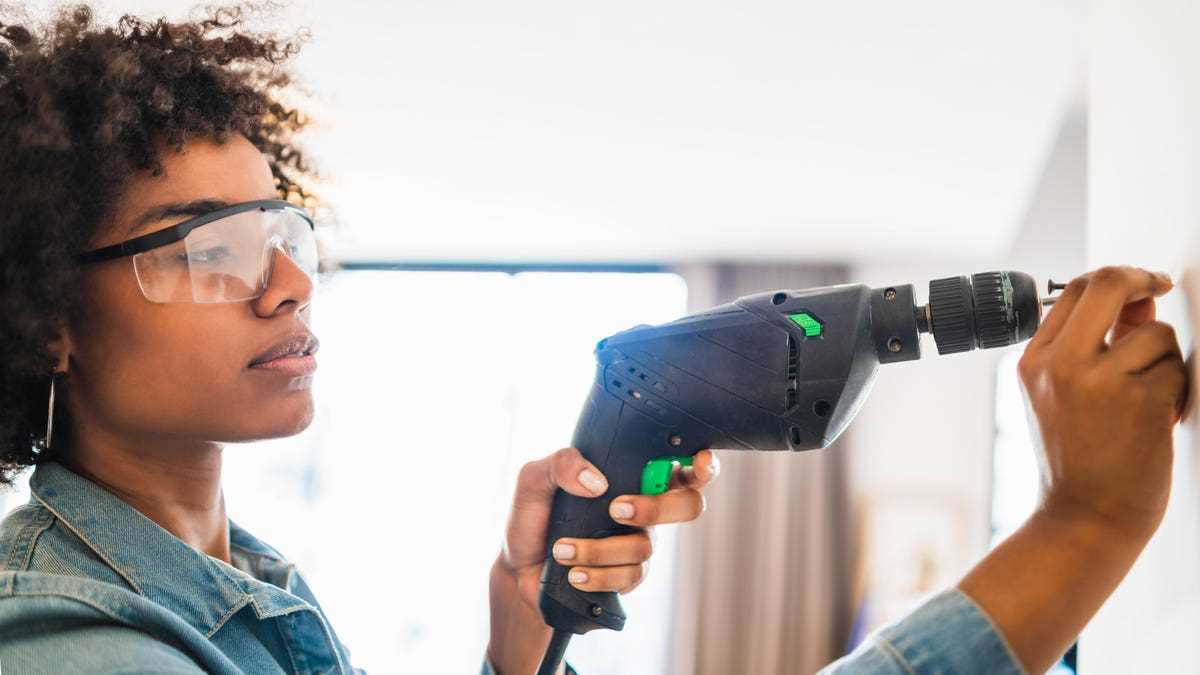
Pilot holes are small guide holes that help prevent the wall from splitting or cracking when drilling larger holes. Here’s how to use pilot holes:
- Select an appropriate drill bit size for the pilot hole. The diameter should be slightly smaller than the screw or anchor you plan to use.
- Mark the center of the drilling spot and start drilling slowly with moderate pressure.
- Once the pilot hole is complete, you can proceed with drilling the larger hole or inserting the screw or anchor directly.
5. Secure Wall Anchors
If you’re drilling into drywall or a wall without studs, it’s crucial to use wall anchors to provide stability and support for your screws. Follow these steps to secure wall anchors:
- Choose an appropriate wall anchor based on the weight of the object you plan to hang.
- Drill a hole into the wall slightly smaller than the anchor’s diameter.
- Gently tap the anchor into the hole until it’s flush with the wall surface.
- Insert the screw into the anchor and tighten until secure.
6. Test Wall Stability
After you’ve completed the drilling process, it’s essential to double-check the stability of the wall. This can be done by:
- Gently tugging or pushing the object you’ve installed to check if it feels secure.
- If the object wobbles or feels loose, it could indicate insufficient anchoring or structural issues with the wall. In such cases, it’s advisable to consult a professional.
By following these steps, you can determine if it’s safe to drill into a wall, minimize damage, and ensure the stability of your installations.
Common Signs of Unsafe Structures
- Cracks in the walls: Large, diagonal, or stair-stepped cracks in the walls can indicate structural issues. These types of cracks may signify foundation problems or shifting walls.
- Bulging or bowing walls: Walls that appear to be bulging or bowing are a potential sign of structural instability. This can occur due to excessive moisture or a weak foundation.
- Sagging ceilings or floors: If you notice that your ceilings or floors have a noticeable sag, this could indicate structural issues. It may be a result of a cracked or compromised support beam or joist.
- Leaning or tilting: If the wall itself is visibly leaning or tilting to one side, it could be a sign of a more serious structural problem, such as a foundation issue.
- Noises: Unusual sounds like creaking, popping, or cracking coming from the walls could indicate movement or shifting within the structure.
- Water damage: Stains, discoloration, or dampness on the walls or ceilings could be a sign of water damage. This may weaken the structure and make it unsafe to drill into.
- Electrical issues: If you experience frequent electrical issues such as tripped breakers, flickering lights, or outlets not working properly, it could be a symptom of underlying structural problems.
- Visible mold or mildew: The presence of mold or mildew on the walls can indicate moisture issues, which can weaken the structure over time.
- Previous repairs: If you notice patched cracks or areas of the wall that have been repaired multiple times, it may suggest ongoing structural problems that have not been adequately addressed.
It is important to note that these signs alone may not guarantee an unsafe structure, but they should be taken seriously and further assessed by a professional. If you observe any of these signs, it is recommended to consult with a structural engineer or a qualified professional to determine the suitability for drilling into the wall.
Consulting Professionals for Safety Assessment
If you are uncertain about whether it is safe to drill into a wall, it is always advisable to consult professionals who specialize in safety assessments. These experts will have the necessary knowledge and experience to assess the structural integrity of the wall and determine if drilling will cause any damage or compromise its stability.
Types of Professionals to Consult
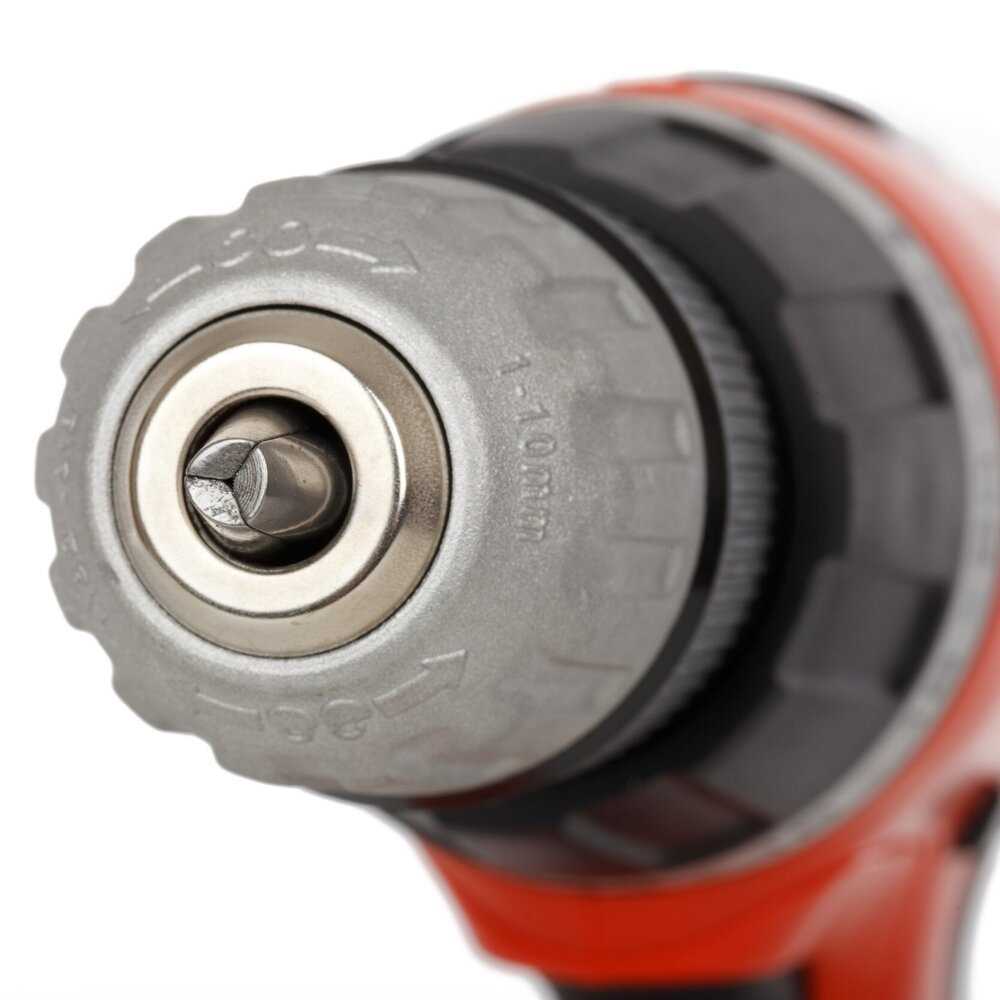
There are several professionals who can provide a safety assessment for drilling into a wall:
- Structural Engineers: Structural engineers are experts in analyzing the structural integrity of buildings. They can evaluate the load-bearing capacity of the wall and provide guidance on the safe areas to drill.
- Contractors: Contractors with experience in construction or renovation can often assess the safety of drilling into a wall. They can identify any potential risks and recommend the best approach based on their expertise.
- Home Inspectors: Home inspectors are trained to evaluate the overall condition of a home, including its structural components. They can assess the safety of drilling into a wall and provide recommendations based on their findings.
Benefits of Consulting Professionals
Consulting professionals for a safety assessment offers several benefits:
- Expertise: Professionals have specialized knowledge and experience that allows them to accurately assess the safety of drilling into a wall. They can provide reliable advice and recommendations based on their expertise.
- Peace of Mind: By consulting professionals, you can have peace of mind knowing that an expert has evaluated the safety of the drilling project. This can help prevent accidents, damage, and costly repairs.
- Customized Approach: Professionals can provide personalized recommendations based on the specific conditions of your wall and the intended use of the drilled area. They can suggest alternative solutions if drilling is deemed unsafe.
How to Find Professionals
To find professionals for a safety assessment, consider the following:
- Ask for recommendations from friends, family, or neighbors who have had similar work done.
- Search online directories and review websites to find professionals in your area.
- Contact local building departments or home improvement stores for recommendations.
- Request quotes and conduct interviews to ensure the professionals have the necessary qualifications and experience.
Remember, it is always better to consult professionals to ensure the safety of your drilling project and protect the integrity of your walls. Safety should always be the top priority when undertaking any home improvement task.
Tips to Ensure Safe Wall Drilling
1. Check for Electrical Wiring
Before drilling into any wall, it is essential to check for electrical wiring to avoid potential disasters. Use a stud finder with a built-in voltage detector or a dedicated electrical cable detector to determine the location of electrical wires behind the wall.
2. Locate Water Pipes
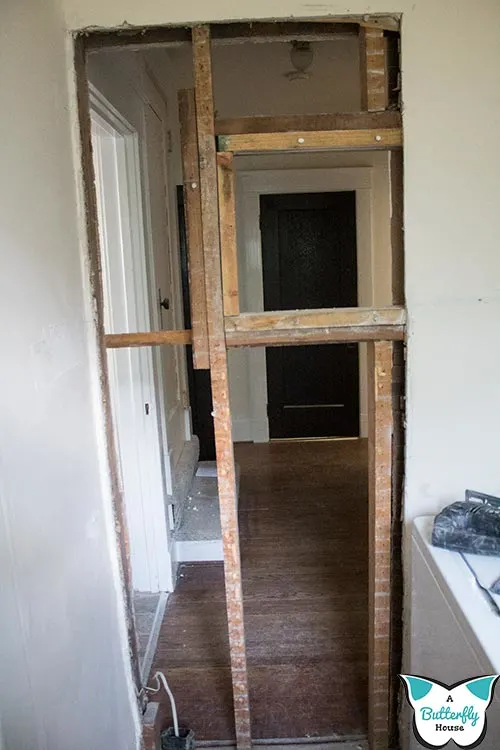
In addition to electrical wiring, it is crucial to locate any water pipes before drilling into a wall. Accidentally drilling into a water pipe can cause significant damage and lead to expensive repairs. Use a pipe detector tool to identify the presence of water pipes in the wall.
3. Use Proper Drill Bits
Using the correct drill bits is essential for safe and efficient wall drilling. Different materials require different types of drill bits. For example, masonry walls require masonry drill bits, while wooden walls require wood drill bits. Choose the appropriate drill bit based on the material of the wall to prevent damage and achieve the desired outcome.
4. Mark the Drilling Area
Before drilling, mark the exact spot where you intend to drill. Use a pencil or a washable marker to make a visible mark on the wall. This will help you stay on track and drill precisely where you intended, avoiding unnecessary damage to the surrounding area.
5. Start with a Small Pilot Hole
When drilling into a wall, it is advisable to start with a small pilot hole before using a larger drill bit. A pilot hole serves as a guide for the larger bit, ensuring that the drilling process is accurate and controlled. It also reduces the risk of the drill slipping and causing damage to the wall or injuring yourself.
6. Use Proper Safety Gear
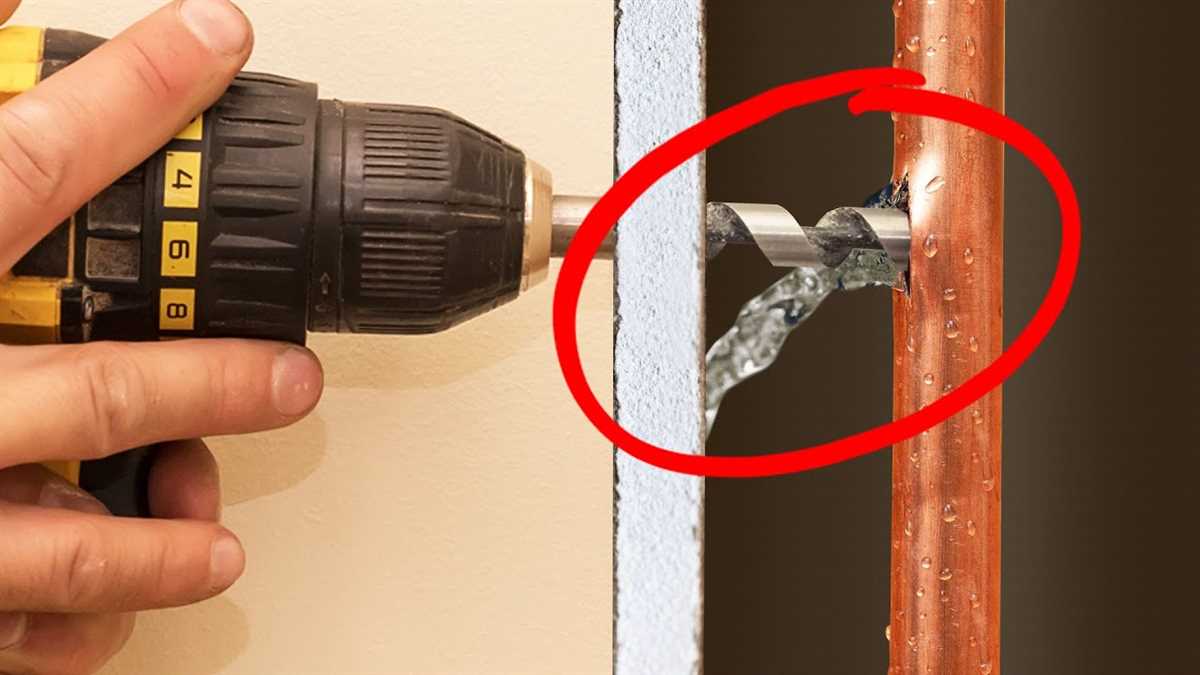
Always wear appropriate safety gear when drilling into a wall. Safety goggles protect your eyes from flying debris, a dust mask filters out harmful particles, and gloves provide hand protection. It is also a good practice to wear ear protection if the drilling process is loud.
7. Secure the Wall with Tape
To prevent the wall from splintering or chipping during the drilling process, secure the area with masking tape or painter’s tape. Apply the tape over the marked spot to create a barrier that helps hold the wall together while drilling.
8. Maintain Control and Steady Pressure
While drilling, maintain control of the drill and apply steady pressure. Let the drill do the work while ensuring you have a firm grip to avoid any accidents. Avoid excessive force or wobbling, as it may lead to a loss of control and cause damage to the wall or injury to yourself.
9. Clean Up After Drilling
After drilling into a wall, clean up any debris or dust that may have been generated. Use a shop vacuum or a broom and dustpan to tidy up the area. This will help prevent accidents and keep the surrounding space clean.
10. Seek Professional Help if Unsure
If you are unsure or inexperienced in drilling into walls, it is best to seek professional help. A professional will have the necessary expertise and tools to ensure the job is done safely and effectively. It is always better to be safe than to risk causing damage or injury.
Following these tips will help ensure safe wall drilling and minimize the risk of accidents or damage. Always prioritize safety and take necessary precautions before starting any drilling project.
FAQ:
How can I determine if it’s safe to drill into a wall?
There are several steps you can take to determine if it’s safe to drill into a wall. First, you should locate the studs in the wall using a stud finder. Once you’ve identified the studs, you can determine if it’s safe to drill by checking for any electrical wiring or plumbing behind the area you plan to drill. It’s important to use a cable and pipe detector to scan the area and ensure there are no hidden hazards. Additionally, you should consider the type of wall you’re drilling into. For example, drilling into a concrete wall requires different tools and techniques than drilling into a drywall. If you’re unsure about the safety of drilling into a wall, it’s always best to consult a professional.
What should I do if I can’t find any studs in the wall?
If you’re having trouble finding studs in the wall, there are a few things you can try. First, make sure you’re using a good quality stud finder and that you’re using it correctly. Sometimes, stud finders can be sensitive to nearby electrical wiring or pipes, so it’s important to read the instructions and adjust the settings accordingly. If you still can’t locate any studs, you can try tapping on the wall to listen for a solid, hollow sound. Studs are usually spaced 16 or 24 inches apart, so if you find one, you can measure to find the others. If all else fails, you can consult a professional who can use more advanced methods, such as an electronic stud finder or infrared technology, to locate the studs.
What precautions should I take when drilling into a wall?
When drilling into a wall, there are several precautions you should take to ensure your safety and protect your home. First, always wear safety goggles to protect your eyes from flying debris. Additionally, make sure to use the appropriate drill bit and drill speed for the type of wall you’re drilling into. If you’re drilling into a concrete wall, for example, you’ll need a masonry bit and a drill with a hammer function. It’s also important to secure the drill and use steady, controlled pressure while drilling to avoid causing any damage. Finally, always be cautious of any electrical wiring or plumbing behind the wall, and use a cable and pipe detector to scan the area before drilling.
Can drilling into a wall cause any damage?
Yes, drilling into a wall can potentially cause damage if not done properly. One common mistake is drilling too deep and hitting a water pipe or electrical wire behind the wall, which can lead to costly repairs and potential safety hazards. Additionally, drilling at the wrong angle or using excessive force can cause cracks, splintering, or crumbling in the wall material. It’s important to take the necessary precautions and use the correct tools and techniques to minimize the risk of damage. If you’re unsure about drilling into a wall or don’t have the necessary experience, it’s best to consult a professional to avoid any potential damage.
Video:











